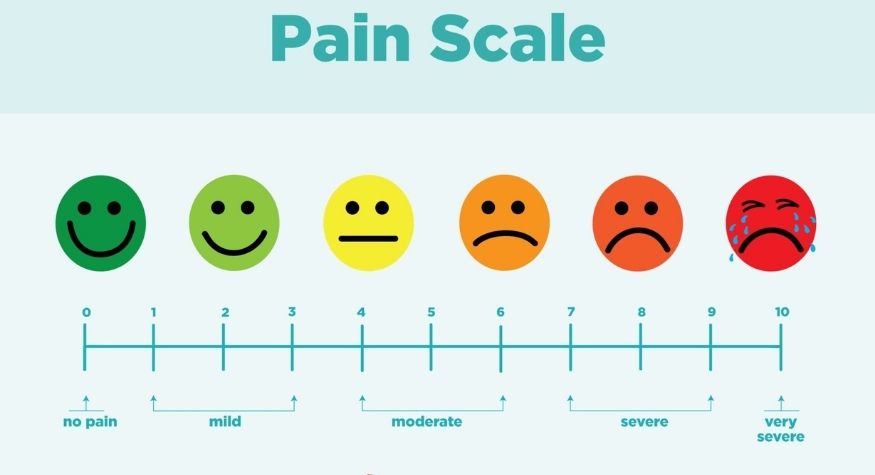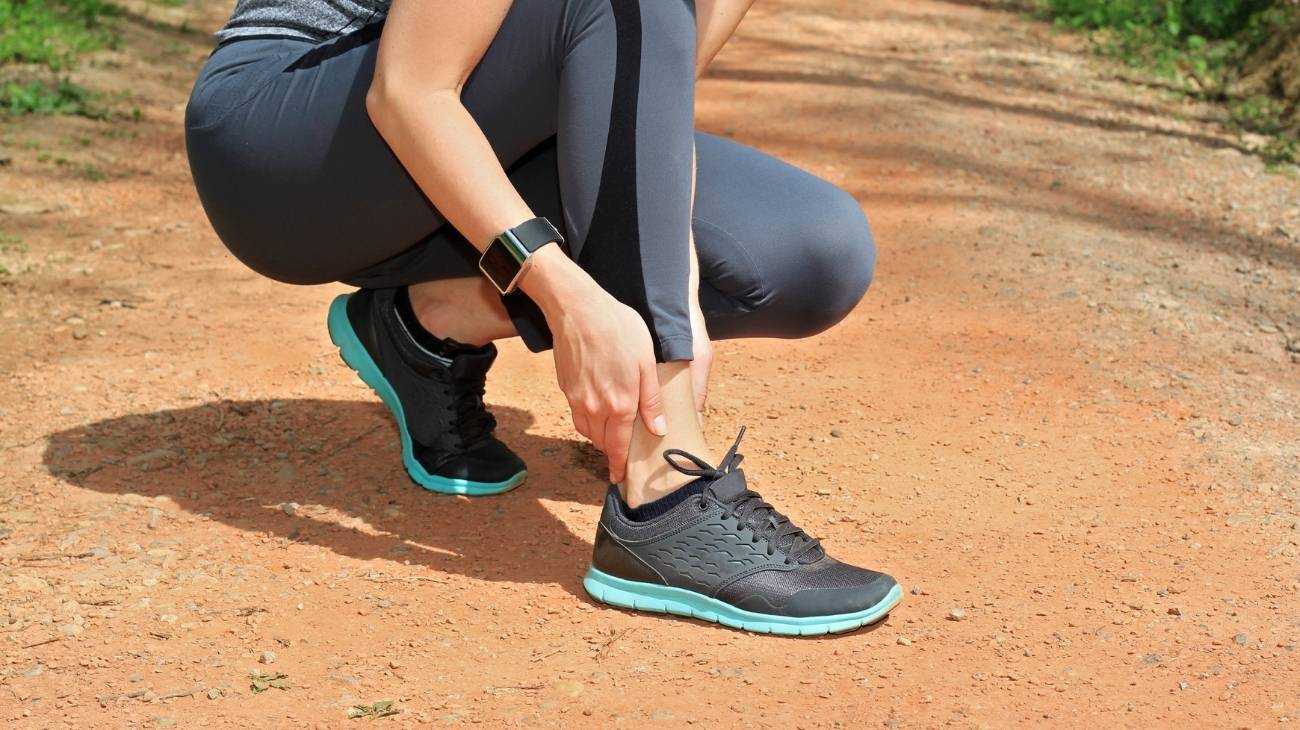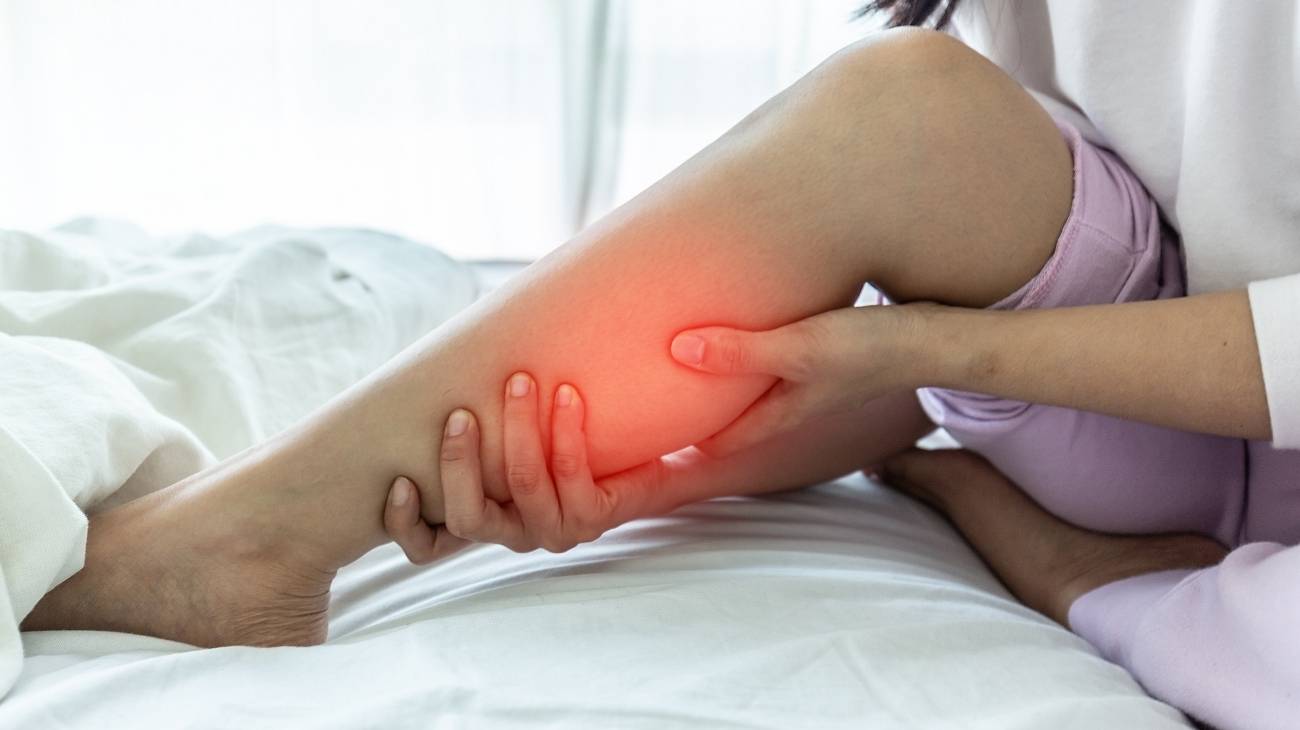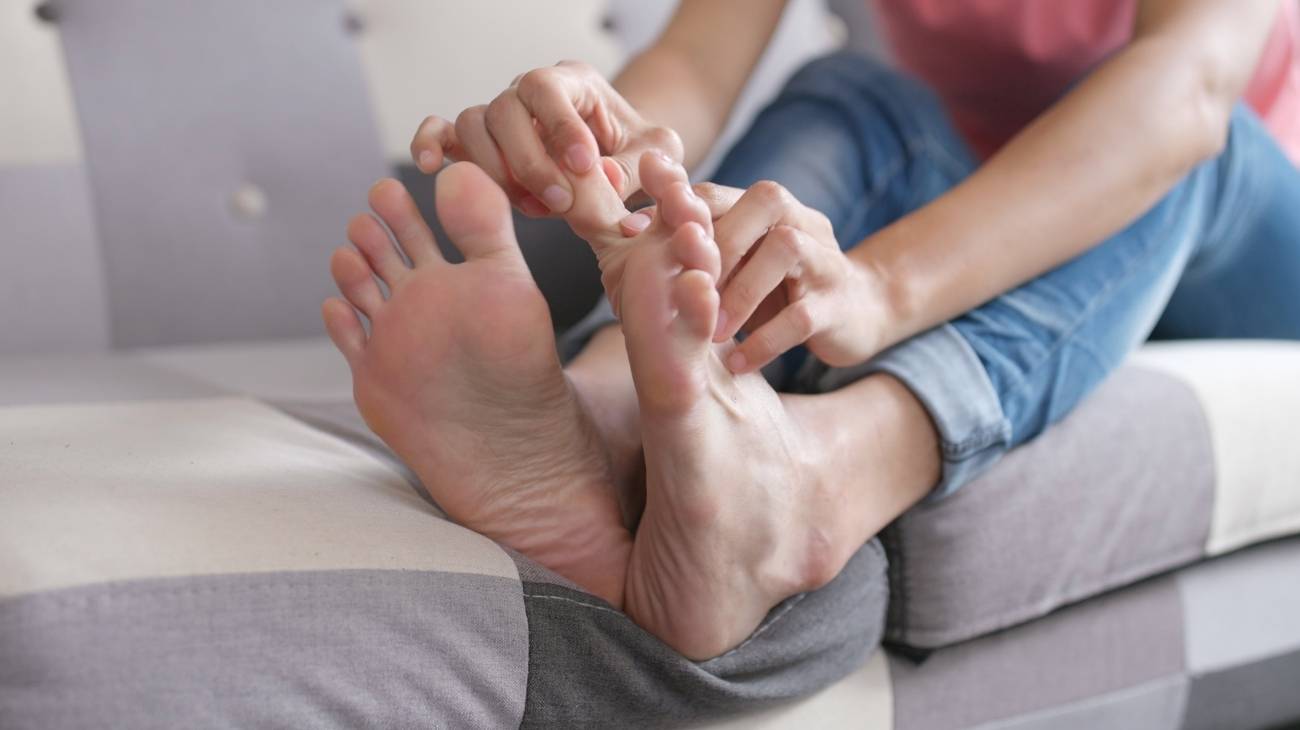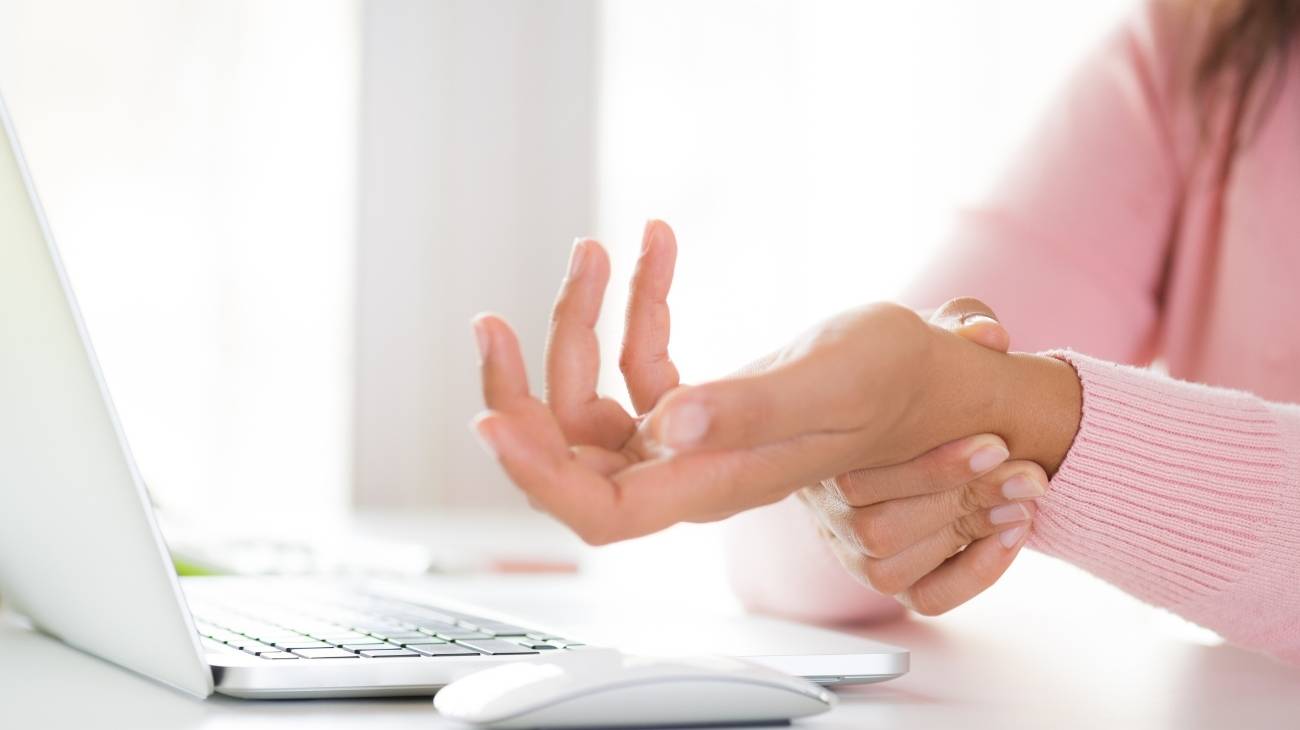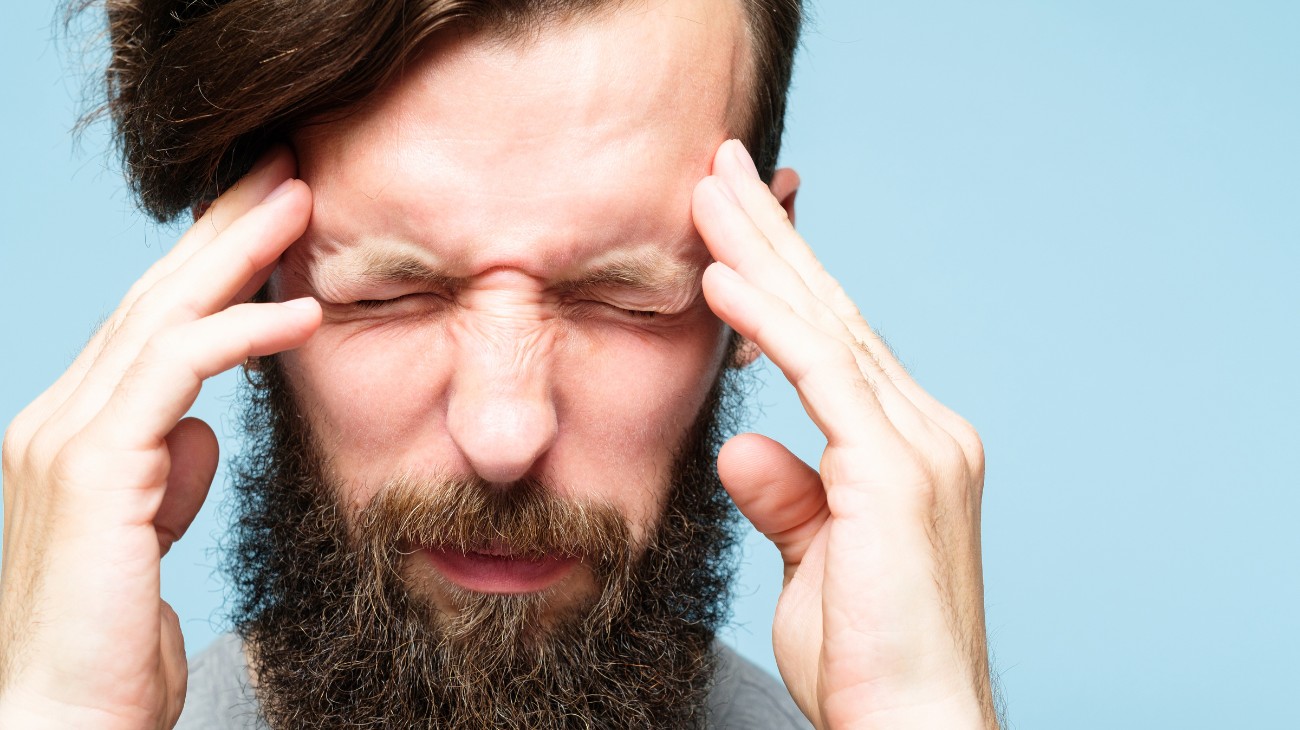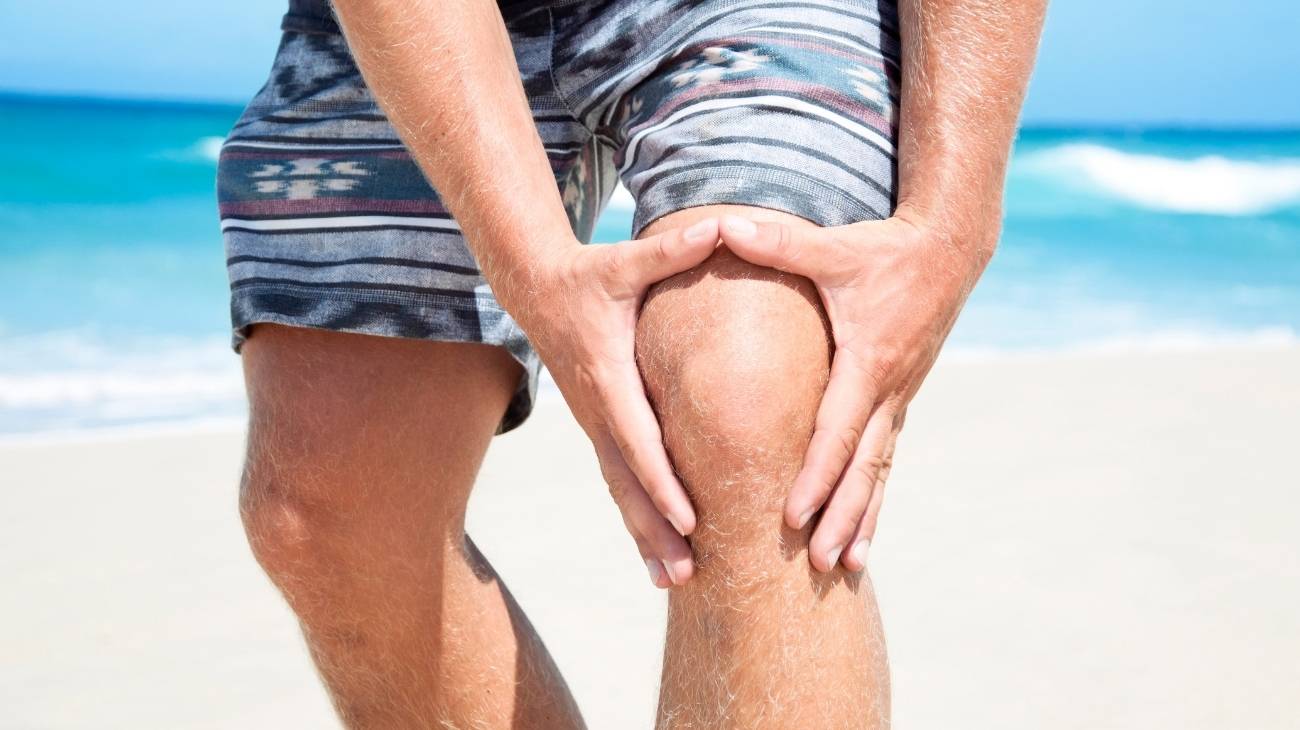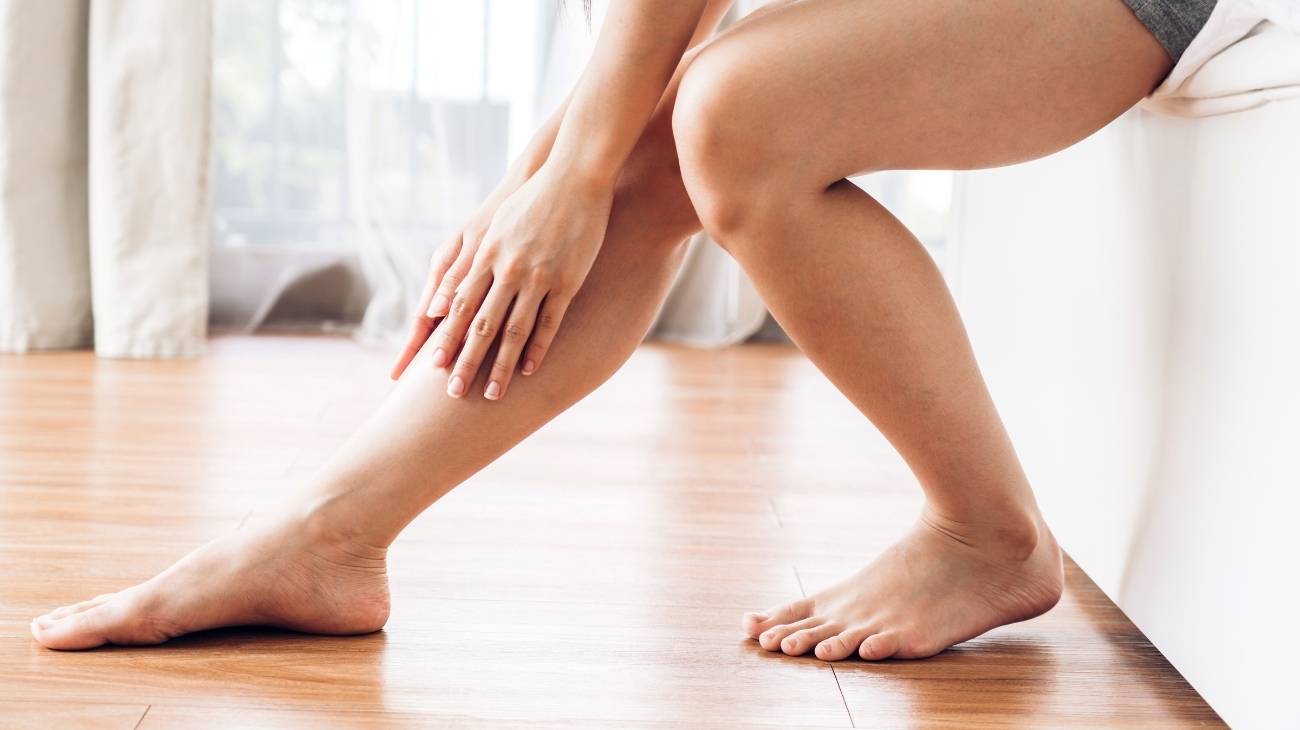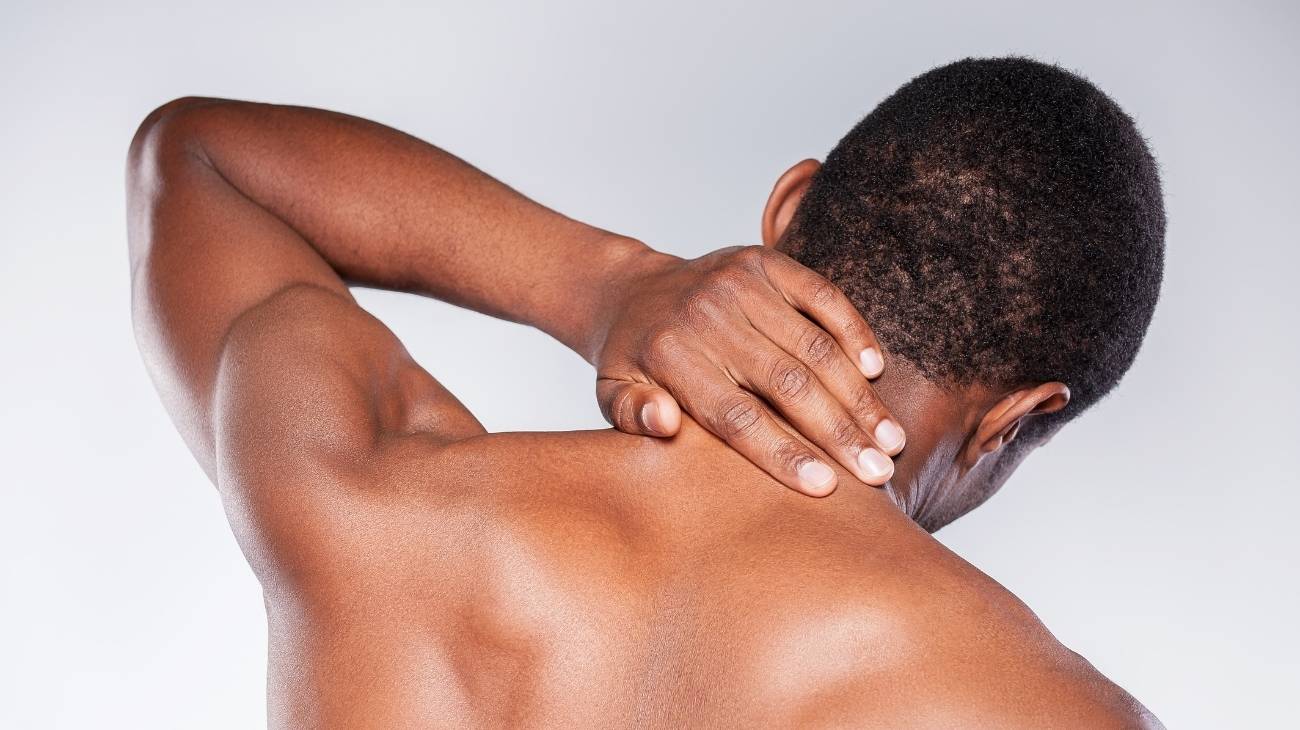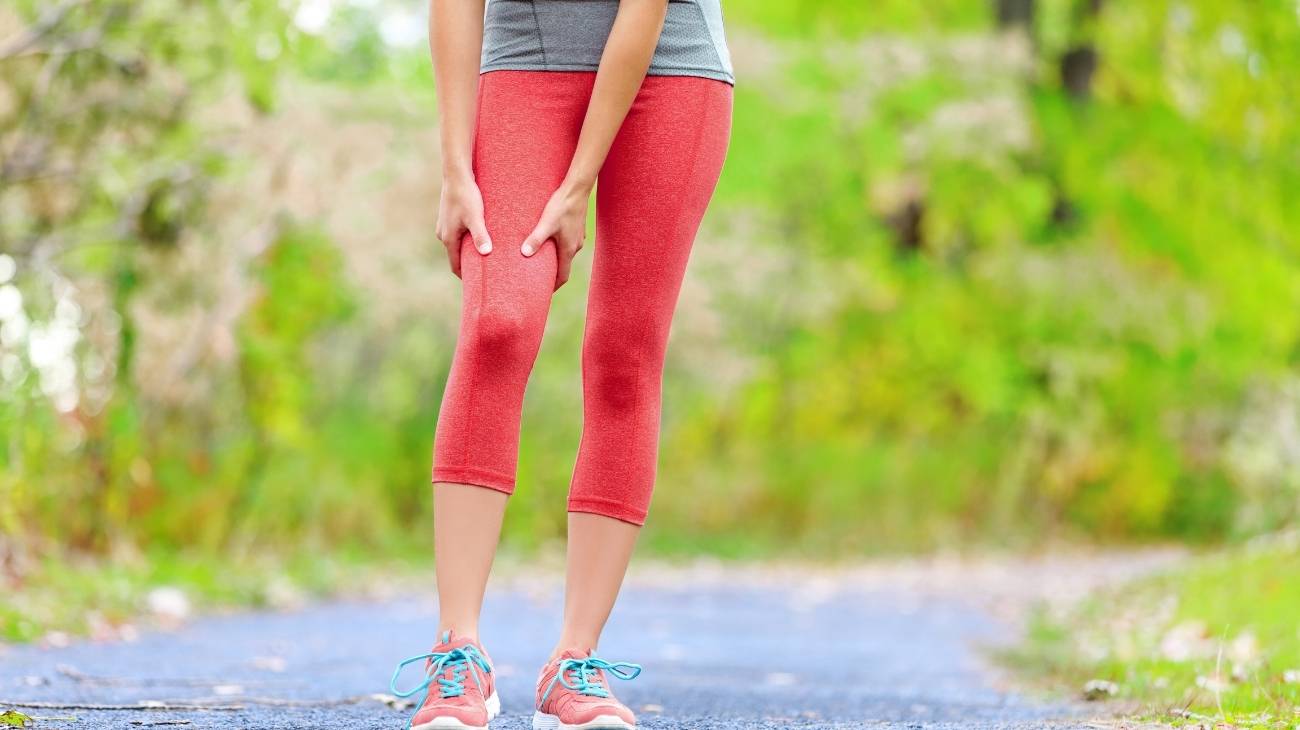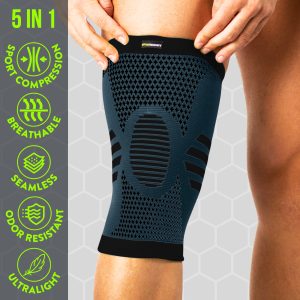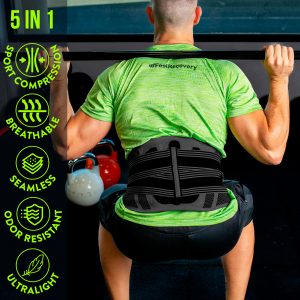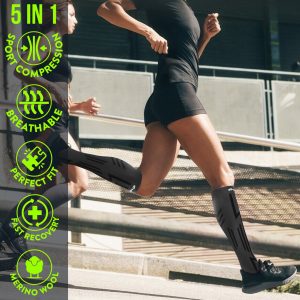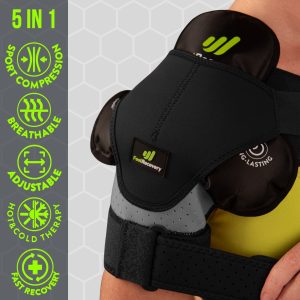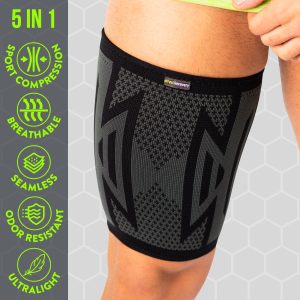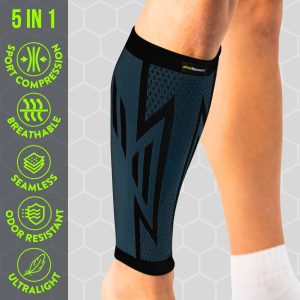- What is pain and how is it perceived?
- How to classify pain and what types exist?
- Best products for pain relief
- What are the main causes of pain?
- What types of signs, symptoms and characteristics does pain present?
- What methods are there to relieve pain naturally?
- How to apply the R.I.C.E. therapy step by step to reduce pain?
- What is the relationship between inflammation and body pain?
Finding pain relief is really important in order to enjoy an excellent level of quality of life. In this post you are going to discover how to do it in the most effective way so that you can forget about your pain as soon as possible.
We will tell you what pain is, how we perceive it and the types of pain that exist according to different classifications; all of this so that you can better understand how your body is working and look for the best solution.
What is pain and how is it perceived?
We can define pain as an unpleasant and annoying sensation that we notice in our body and that, due to its intensity and location, impairs some of our capacities, conditioning them in one way or another.
This implies the damage that is physically produced to our organism, which is the most evident and the one we all think of when we talk about pain. However, we must not forget the importance of emotions; pain that has a mental origin often aggravates physical pain and conditions the treatment and cure of all kinds of illnesses.
The perception of pain can be very subjective and conditioned by our nociception (the neuronal process by which stimuli are coded and processed). Pain is perceived through the neural system and nerve pathways capable of responding primarily to stimuli.
However, Ronald Melzack was able to ascertain, and he put it down in what is now known as the "Neuromatrix Theory", that the process of pain also involves the transmission and diffusion of the endocrine system and psychological factors.
According to the "Gate Control Theory" (the one that allows more or less pain to pass through), it dictates that pain always has three dimensions:
- Sensory or discriminative: Refers to the physical property.
- Affective or motivational: These are the emotional phenomena that interfere with pain.
- Cognitive or evaluative: These are the aspects that help interpretation, considering previous experiences, attentional aspects, the context in which we find ourselves, etc.
How to classify pain and what types exist?
There are many types of pain, as well as several ways of classifying it. What we must always consider is that its intensity varies. This is important because, in the case of mild pain, we may not pay the necessary attention, thus encouraging the development of a pathology. As for the rest, you will see that all the classifications we can make are useful, so it is important to know and recognise ourselves in order to help the medical professional make a diagnosis.
According to the zone
Here we refer to the different zones of our body:
According to the cause or pathogenesis
In the eyes of the affected person, this may not be the most well-known or interesting classification. However, having an idea of the pathogenesis is indispensable for the professional treating you.
- Physiological pain: We notice it physically as:
- Nociceptive pain: There is a painful stimulus in our nociceptors. When it is acute, it warns us of damage that has occurred or is yet to occur. In turn, we could subclassify it according to its place of origin.
- Somatic pain: This can be superficial if it affects the skin or mucous membranes or deep if it affects joints, bones, tendons, vessels...
- Visceral pain: It originates in the organs known as viscera, the internal organs. Its localisation is difficult, which is why it is confused and delays the correct diagnosis. It goes hand in hand with reactions of the nervous system of different kinds. It can reach, as referred pain, to the corresponding topical area.
- Neuropathic pain: In this case, there is a lesion of part or all of the nervous system (or its dysfunction). There is damage to the nerve fibres and it is the neural structures themselves that emanate the pain and not the nerve endings of the fasciae or organs. There is a subdivision according to the area and amount of the system that has been affected. It is abnormal, of no recognised usefulness and is very difficult to diagnose. It is felt as burning and stabbing and increases immediately after an injurious stimulus.
- Nociceptive pain: There is a painful stimulus in our nociceptors. When it is acute, it warns us of damage that has occurred or is yet to occur. In turn, we could subclassify it according to its place of origin.
- Psychogenic pain: It is caused by mental processes, i.e. its origin is not physiological. It is rare but usually occurs as an enhancer of chronic pain.
According to the affected tissue
Our body is made up of different elements. It is essential to differentiate the type of pain in this case in order to know what to prescribe or recommend and, more importantly, what not to prescribe or recommend when it comes to treatment or maintenance.
- Bone pain or bone pain: The affected part is the bone. Due to its morphology, there are few problems that produce this type of pain. Some are fractures, rheumatism or arthritis.
- Internal organ pain or visceral pain: This usually occurs with a certain delay with respect to the condition that causes it. For example, kidney pain occurs hours after it has been strained. It is also caused by degeneration of the viscera itself. It may be a symptom of a disease more or less related to the organ in question, which is why it is so important to get a diagnosis.
- Muscle pain: It is the muscle tissue that hurts. It is usually caused by overexertion, friction or trauma.
- Ligament pain: As above, it is usually a blow that causes pain in the ligaments. Also uncontrolled twisting or a bone slipping out of place.
- Neuropathic pain: The pain is caused by a pinched or damaged nervous system or part of it. A clear example is sciatica.
Depending on accessibility
Depending on whether or not we can have direct contact with the painful area, we could make another simple but effective classification. One or the other, or the presence of more than one, can lead us to diagnose problems as well as to define a therapy with combined treatments.
- External pain: This occurs in the skin and in the tissues immediately below. In practically all cases the cause is an external event. It is not usually serious.
- Internal pain: This includes pain in the muscles, bones, bursae, viscera, etc. We are talking about damage that is occurring in the internal elements of our body. On many occasions, the pain is palpable from the outside, as in the case of a fracture, and on other occasions it is not, as in the case of stomach pain, for example. It can be caused by an external event, such as a blow, or by the affectation of the internal elements themselves, such as rheumatism, implying a variable severity.
According to intensity
Intensity is the strength with which this pain manifests itself and how we feel it. It determines types of therapies, duration, first aid actions and much more.
- Mild pain: The intensity is low or very low. It allows us to carry out our daily activities with a minimum degree of discomfort and, by focusing our attention, we may even feel that it disappears.
- Moderate pain: Its intensity interferes with our daily life, making it difficult for us to carry out tasks that we can usually do without any problem. We maintain our autonomy but it affects our quality of life. It requires treatment.
- Severe pain: There is high intensity discomfort. The quality of life is significantly reduced because it interferes severely with day-to-day life but also affects sleep. It can be a trigger for other pathologies. It requires professional medical treatment as soon as possible and can become incapacitating.
According to its duration
The duration, i.e. how long something hurts, determines whether it can be considered acute or chronic. We will take this into account when proposing immediate relief and also according to the intake of medication and other treatments received on an ongoing basis.
- Acute pain: This is a very intense sensation, generally produced immediately after an injury or when our body is weakened and more sensitive. It is a defence resource that alerts us to damage that has occurred or is about to occur (from a fracture to the presence of a virus that multiplies in our throat). It is of limited duration and depends on the type of problem we are suffering from.
- Chronic pain: This is pain that lasts for a long period of time (more than six months are stipulated for it to be considered as such). It is less intense and more recurrent (maybe even maintained if we do not treat it). It lives with us but sometimes disappears, and generally returns due to overexertion or relapses in the illness that causes it.
Best products for pain relief
Bestseller
What are the main causes of pain?
The cause of pain is any interaction with the elements in our environment that makes us physically or emotionally unwell. We can feel pain because the receptor nerve cells are activated in certain circumstances in which our body is in an abnormal situation.
By looking at pain according to its pathogenesis, which we have already seen above, we can determine many causes for it to occur.
- Tissue damage: Tissue damage usually occurs. This can be caused by direct trauma to the area (dislocations, contractures, sprains, fractures, effusions, etc.), by maintaining a bad posture, making a bad movement, etc.
- Degeneration of parts: When an element of our body wears out due to overuse or misuse due to age or for any other reason, it no longer fulfils its functions properly. It may be the case that we become unprotected as a result and, as a result, we become more sensitive to pain.
- Diseases: Likewise, we have that all kinds of diseases, dysfunctions and other pathologies can cause us to suffer pain by the simple fact of suffering from them, as one of their symptoms among many. We can talk about a viral throat infection, arthritis, depression, eyestrain, menopause and many others.
What types of signs, symptoms and characteristics does pain present?
It may seem like an obvious question to answer, but in reality, when we experience pain we can notice it in a variety of ways.
The main symptoms are
- Inflammation.
- Redness in the affected area.
- Fever.
- Stiffness.
- Tingling.
- Burning
- Difficulty in moving.
- Our blood pressure rises.
- We may experience tachycardia.
- Disorientation
- Sweating
- Irritability and moodiness.
- Our pupils may dilate.
- We feel more vulnerable.
- We have difficulty sleeping.
What methods are there to relieve pain naturally?
There are a number of low-invasive pain relief methods that are really effective and can be carried out with virtually no worries, as they have few side effects.
Let's take a look at alternative and non-pharmacological therapies to help reduce pain symptoms:
Heat and cold therapy
Also called contrast therapy, this consists of applying cold and heat alternately to the affected area, either by means of water or steam, by conduction or convection. Heat, which should be used first, can be endured for longer than cold, except when indicated by a professional.
Some resources to carry out this therapy are thermal pools, contrast showers, use of high and low temperature wet compresses or dry heat and cold elements, such as thermal pillows for microwaves or ice gel packs.
It is a suitable treatment as long as your pain is not acute and you are not injured. It produces great comfort in cases of bone disease or when our muscles have atrophied due to lack of nutrients, two cases in which we feel very different pain but with an identical solution.
Compression therapy
Compression consists of putting tissues in place and holding them in place by using compressive elements such as elastic bands, braces or, directly, compression garments. With this, healing is faster and we avoid pain and other inconveniences caused by moving the affected areas, as with compression garments we manage to reduce the mobility of our body through pressure.
It is a treatment designed for oedemas, ulcers, to eliminate liquids and to treat varicose veins. However, it is also useful, in the lower degrees, to treat sprains, sprained ligaments, muscle strains and other injuries as well as in any case in which the microcirculation is insufficient.
Massage therapy
Massage is ideal for treating emotional pain and other such disharmonies. This is due to the fact that we relax and let ourselves go. The focus of problems is removed, stress is forgotten, anxiety is reduced, and so on. Thanks to the many different types of massage, of course, we also work on the physical pain in our body.
With the patient relaxed, gliding, kneading, compression, friction, vibration and percussion movements are applied. Depending on these movements and the areas of the body used for the massage, we can achieve many different effects.
More or less related to pain, they are the elimination of knots in our musculature and other tissue changes, the repositioning of tissues and the relaxing component of the massage, make many of the pains we suffer considerably softer.
Acupressure therapy
A non-invasive way to reduce or relieve pain is to receive acupressure sessions. It is based on a Chinese therapy in which the protagonist of our well-being is the internal Chi. The therapy consists of balancing the Chi so that it flows and keeps each of our tissues functional and in good condition.
There are specific points in our body which, when we work on them, guide the manipulation to certain areas (where we feel pain or where we should be treated, i.e. where we have suffered damage) to reduce it or make it disappear.
These points are determined, very precise and each one requires a particular type of manipulation, although, in general, more or less strong pressure must be applied for a period of time on the meridian point. Simply put, we apply pressure to an area of the body, thereby treating the painful area from which the pain emanates.
The positive thing about this therapy is that it not only treats purely injurious pain, for example a dislocation, but is beneficial for many other pains such as toothache, visceral pain, sore throat and many others. In addition, it has other benefits such as improving the quality of sleep, eliminating dizziness and vertigo, reducing fatigue, giving us emotional balance, etc.
Cryotherapy
Cryotherapy makes use of cold, generally by direct or semi-direct contact with our skin to treat mainly pain after an injury, whether it is a sports injury, a fall, a blow or any other accident.
It is ideal because it reduces the inflammation of the bruised area (lowers the temperature and slows down the blood flow) and at the same time has a very mild anaesthetic effect (it affects nerve sensitivity), both of which are essential to reduce pain. Of course, there are many other benefits.
This treatment can be carried out in many ways, from the simplest, domestic, which consists of taking ice from the freezer and putting it in a cloth so as not to place it directly on our body, to sprays or cold cabins. It is so important that it is considered one of the steps in the RICE injury recovery therapy.
Thermotherapy
This is wherewe apply heat to eliminate pain. Of course, you may feel reluctant since the resource used is the opposite of what we have just seen; and it is true. What happens is that thermotherapy is beneficial in the case of chronic, recurrent pain that we feel after a long period of time following an injury (more than three days). That is, it is used when the pain we feel is not acute.
The heat acts as an analgesic, which in itself reduces heat, and has a sedative effect. But it also interacts with our body in other ways that also reduce pain. For example, in the case of stiffness, numbness or bruising of a muscle, heat helps to soothe them and thus less pain is suffered.
The application is similar to that of cryotherapy: heat compresses, thermal pillows for microwaves, immersions in swimming pools, sauna sessions, etc. The temperature and exposure time must be controlled, as well as the decision whether to apply the heat directly to an area or more generally.
Electrical muscle stimulation (EMS)
Muscle electrostimulation, or EMS, is a therapy that consists of stimulating muscle contractions through the use of electricity, so as to achieve an effect of activity and hypertrophy as in the gym, but without the need to go to any sports center. This means that you can put your muscles to work without leaving home.
What you are looking for is a clean contraction that simulates what you get from running long distances, lifting dumbbells or doing squats. However, the effect is not the same for the simple reason that when we move and exercise, we achieve total muscle activation, while the electrical discharges of EMS only achieve this in a percentage and not at the same intensity.
However, there is medical evidence to support results that, while not as exaggerated as marketing would like to sell them, are still extremely beneficial to health and provide an alternative for those days when you can’t train regularly.
Electrotherapy
This is a technique that seeks relief from pain and some physical ailments through the application of electrical and electromagnetic energy, among other variants, through the skin with the use of conductive pads called electrodes. It is a very safe type of therapy and must be applied by a physical therapist specialized in the manipulation of electricity to treat some kinds of ailments.
Myofascial release therapy
Also known as myofascial induction, this therapy consists of the application of manual massage to treat the shortening and tension generated in the myofascial tissue that connects the muscles to the bones and nerves. For this purpose, various massage techniques are used that focus on the so-called trigger points.
The therapy works by releasing all the tension accumulated in an area of myofascial tissue, which is one of the main causes of pain, as well as stretching the tissues so that they relax and the ailment is diluted, generating relief. However, this may not be a total cure for the injury, as at this point the problem may have become chronic.
This is important to know because in many cases myofascial pain is simply a consequence of degenerative diseases of the soft tissues or nerves, so the application of this therapy will only be useful to relieve pain at specific times. Patients with problems such as chronic myofascial pain syndrome, for example, should visit their trusted physiotherapist on an ongoing basis to apply release massages on a regular basis.
Percussion Massage Therapy
Vibration or percussion massages are precise, rhythmic and energetic strokes on the body to achieve relief from some annoying symptoms when muscle fibers are tightened, often by a high workload on them and that has left trigger points in the muscle fibers.
This technique has been known for hundreds of years and is applied with the back of the hands. Today, professional physical therapists often use percussion massage guns that offer more effective and continuous movements. Some of the benefits include relieving stress, preventing injuries and improving the circulatory system.
Although this is a product for self-massage, it is recommended that people have a minimum degree of knowledge to know how to use the muscle massage guns and avoid damaging tissues and parts of the body such as joints that should not receive the constant blows.
Trigger points therapy
Myofascial pain points or trigger points are knots that are created in the deeper muscle tissues, causing intense pain. The pain does not always manifest itself right in the area where the point develops, but rather this pain is referred to nearby areas that seemingly do not appear to be related. In fact, it is estimated that more than 80% of the pain they cause manifests in other parts of the body.
In this sense you can imagine that a trigger point is similar to a herniated disc, which may appear in a specific vertebra of the spine, but the pain can manifest itself anywhere in the back as it is connected in its entirety by a large number of nerves. The same happens with the “trigger point” since the myofascial tissue is found throughout the body and is connected in its entirety.
Other effective alternative therapies
If you want to try something else, know that there are still other therapies, less used but equally non-invasive and that work.
- Natural remedies using plants: Plants, dried and in infusions, breathing or as an ingredient in plasters can reduce pain on many occasions. Among the most beneficial cases are those of bone or rheumatic problems, those related to poor circulation and sore throats. Even so, many more pains and other aspects of improvement are worked on, such as when we have been intoxicated, if we have a weak immune system, etc.
- Acupuncture: We treat pain in an area by working on its meridian point (the area of the body to which it is related, from which it is accessed). Unlike acupressure, acupuncture requires the use of needles to stick in strategic points, always at a specific angle and depth.
- Kinesiotherapy: An expert will give us indications to perform certain movements that will make our body react in different ways, mitigating the pain. Twisting is performed, traction is applied, parts of the body are flexed, etc. Each pain, and depending on its cause, of course, requires certain movements, a maintenance of these movements, a speed of execution, etc.
- Aromatherapy: The use of oils and other aromatic elements to create sensations. It is not, obviously, the treatment that most affects the pain, as its effects are very subtle, but it tends to support other therapies such as massage or acupuncture, by giving us warm baths.
- Osteopathy: The aim is to achieve balance in the body using mainly manual techniques. Usually it does not seek a cure but the preservation of the functions, so it is usually a preventive or maintenance method.
- Ultrasound: Ultrasound is applied especially to reduce bone pain as well as in the case of moderate or severe muscle constriction.
How to apply the R.I.C.E. therapy step by step to reduce pain?
This is the first therapy that was named as a method to treat pain and injury situations . Its acronym refers to four basic steps that any expert will recommend if you have fallen, if you have overexerted yourself, if you have been hit, if you have a contracture, etc.
Over time it has been perfected and today, although it is still the best known due to its novelty, we always apply the PRICE therapy, which is an update of the RICE therapy.
Each of its letters indicates the steps to follow:
- Protection: Protect yourself to maintain your safety and, at the same time, the best condition of the affected area. This involves cleaning, disinfecting, bandaging or tourniquet, etc.
- Rest: You should take care to rest from time to time. We should not remain totally immobile, but we should try to reduce the workload on the painful area and, in general, use it less and more safely.
- Ice: We have already seen that cold is ideal in the first moments after an injury. It should be applied to the area, taking care not to place ice (if necessary) in direct contact with the skin. Do not leave the cold too long immobile on the area, but rather massage it with the device or product in question and do not abuse it, trying not to exceed six cold sessions a day.
- Compression: Hold the area in place with a compression device. This way, you will avoid worsening the injury and make recovery easier.
- Elevation: When resting, take advantage of this and hold the painful area above your heart in a comfortable position.
You must remember that this therapy is useful in the acute and initial stages. This means that it is useful after injury but not when you suffer from chronic pain or when your injury still hurts but is no longer inflamed.
What is the relationship between inflammation and body pain?
Indeed, inflammation and pain are two concepts that are closely related in some cases. We have already seen that pain can have many different causes. However, some of these causes, such as fractures, sprains and, in general, any injury, include an inflammatory process.
This means that, in these circumstances, the pain appears as a result of this inflammatory process. Other signs of inflammatory eventuality are redness, warmth, swelling or dysfunction. Inflammation of a body part occurs to combat an irritant detected by nociceptors.
Tissue damage means that the cells of the tissue eventually dilate the blood vessels considerably and thus promote the flow of blood to the area. This is the basic reason why our body becomes inflamed. Every tissue, in addition to carrying the inflammatory exudate, begins to change. It becomes more permeable, leukocytes leave, cytokines appear and various excitatory and irritant processes appear, leading to the onset of pain.
Untreated acute inflammation will become increasingly painful, deform tissues and bones and make movement difficult. On the other hand, when inflammation is chronic, pain may not be felt or may be intermittent or very mild. Similarly, pain does not always mean that we are suffering from inflammation. It is possible, as we have seen above, that it is caused by many other circumstances.
- Pain is a symptom of inflammation but not the other way around. Nor does it appear for this reason alone.
- Inflammation almost always includes pain, intense pain if the inflammation is acute and moderate or mild pain when it becomes chronic.
References
- Faucher, L., & Furukawa, K. (2006). Practice guidelines for the management of pain. Journal of burn care & research, 27(5), 659-668. https://academic.oup.com/jbcr/article-abstract/27/5/659/4605455
- Koes, B. W., Van Tulder, M. W., Ostelo, R., Burton, A. K., & Waddell, G. (2001). Clinical guidelines for the management of low back pain in primary care: an international comparison. Spine, 26(22), 2504-2513. https://journals.lww.com/spinejournal/Abstract/2001/11150/Clinical_Guidelines_for_the_Management_of_Low_Back.22.aspx
- Morad, A., & Farrokh, S. (2018). Pain management. Essentials of Anesthesia for Neurotrauma, 447-460. https://books.google.es/books?hl=en&lr=&id=uDgPEAAAQBAJ
- Ferrell, B. A. (1991). Pain management in elderly people. Journal of the American Geriatrics Society. https://psycnet.apa.org/record/1991-19066-001
- Navratilova, E., & Porreca, F. (2014). Reward and motivation in pain and pain relief. Nature neuroscience, 17(10), 1304-1312. https://www.nature.com/articles/nn.3811
- Banning, A., Sjøgren, P., & Henriksen, H. (1991). Pain causes in 200 patients referred to a multidisciplinary cancer pain clinic. Pain, 45(1), 45-48. https://www.sciencedirect.com/science/article/abs/pii/030439599190163R
- Karcioglu, O., Topacoglu, H., Dikme, O., & Dikme, O. (2018). A systematic review of the pain scales in adults: which to use?. The American journal of emergency medicine, 36(4), 707-714. https://www.sciencedirect.com/science/article/abs/pii/S0735675718300081
- Hawker, G. A., Mian, S., Kendzerska, T., & French, M. (2011). Measures of adult pain: Visual analog scale for pain (vas pain), numeric rating scale for pain (nrs pain), mcgill pain questionnaire (mpq), short‐form mcgill pain questionnaire (sf‐mpq), chronic pain grade scale (cpgs), short form‐36 bodily pain scale (sf‐36 bps), and measure of intermittent and constant osteoarthritis pain (icoap). Arthritis care & research, 63(S11), S240-S252. https://pubmed.ncbi.nlm.nih.gov/22588748/
- Johnson, C. (2005). Measuring pain. Visual analog scale versus numeric pain scale: what is the difference?. Journal of chiropractic medicine, 4(1), 43. https://www.ncbi.nlm.nih.gov/pmc/articles/PMC2647033/
- Eccleston, C., Morley, S., Williams, A., Yorke, L., & Mastroyannopoulou, K. (2002). Systematic review of randomised controlled trials of psychological therapy for chronic pain in children and adolescents, with a subset meta-analysis of pain relief. Pain, 99(1-2), 157-165. https://www.sciencedirect.com/science/article/abs/pii/S0304395902000726

